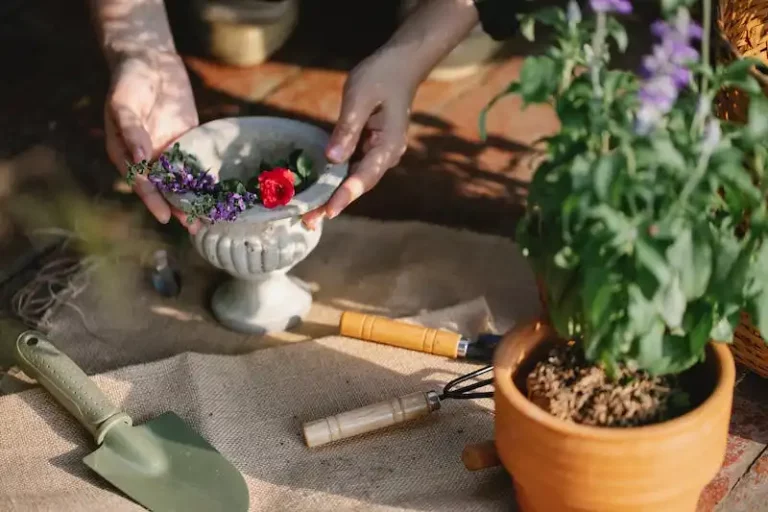Are you wondering how to plant bare root strawberries? It might seem like a daunting task, but with the right instructions, it can be quite simple. In this article, we’ll walk you through the process step by step, ensuring that you have all the information you need to successfully plant and grow your own delicious strawberries.
First, let’s talk about bare-root strawberries. These are strawberry plants that have been harvested and sold without any soil around their roots. They are usually available for purchase in December or early spring. Bare-root strawberries are a popular choice among gardeners because they are typically less expensive and easier to handle than potted plants. However, they do require a little more care and attention during the planting process to ensure their successful rehydration and establishment in the ground.
Before you start planting, there are a few things you would need to do. First, choose a sunny spot in your garden. Strawberries love sunlight, so ensure that the location you select gets at least 6 hours of direct sunlight per day. Next, prepare the soil. Strawberries prefer well-draining soil with a pH between 5.5 and 7. If your soil is heavy clay or sandy, consider adding organic matter, such as compost, to improve its structure and fertility. Also, make sure to remove any weeds or grass from the planting area.
Now, let’s move on to the planting instructions. Begin by soaking the bare-root strawberries in water for about an hour before planting. This step is crucial for rehydrating the plants and ensuring their survival. While the plants are soaking, prepare the planting area by digging shallow rows in the ground. Space the rows about 3 feet apart to allow for easy access and airflow between the plants. Dig the rows to a depth of about 6 inches.
When the bare-root strawberries have finished soaking, inspect them for any signs of damage or disease. Remove any damaged or mushy roots, and trim any excessively long roots to about 4-6 inches. Also, clean any excess soil from the roots, but be careful not to wash away the tiny roots that are necessary for the plants’ survival and growth.
Next, carefully arrange the bare-root strawberries in the prepared rows, spacing them about 12-18 inches apart. Avoid crowding the plants, as this can promote the spread of diseases and reduce airflow. Make sure that the plants are situated with their crowns level with the soil surface. Do not bury the crowns, as this can cause the plants to rot.
Once the bare-root strawberries are arranged, gently backfill the holes with soil, ensuring that the roots are well-covered. Press the soil lightly around the plants to secure them in place. After planting, water the strawberries thoroughly to settle the soil and remove any air pockets. Keep the soil damp, but not waterlogged, throughout the growing season.
Finally, apply a layer of straw or mulch around the strawberry plants to keep the soil moist, suppress weeds, and protect the plants from freezing temperatures. In colder regions, this mulch layer is crucial for winter protection. Be sure to leave the crown of the plants exposed, as covering it with mulch can cause rotting. In spring, remove the mulch to allow the plants to grow freely.
And that’s it! You now know how to plant bare root strawberries. By following these instructions, you’ll be well on your way to enjoying a bountiful harvest of delicious strawberries in your very own garden. If you have any questions or comments, feel free to ask. We’ll be happy to assist you. Happy planting!
Planting Bare-root Strawberry Plants
If you are planning to add berry plants to your garden, buying bare-root strawberry plants can be a great option. Bare-root plants are a cost-effective way to start a strawberry patch, and they have a higher chance of surviving and growing compared to other types of plants. Here are some instructions for planting bare-root strawberry plants:
1. Equipment: Before you start planting, make sure you have the necessary tools and materials. You will need a trowel or small shovel, gardening gloves, and separate containers to hold the bare-root plants.
2. Growing Instructions: Read the growing instructions provided by the seller. Different varieties of strawberries have different requirements for sunlight, soil type, and watering. Make sure you have the right conditions in your garden for the variety you are trying to grow.
3. Planting in the Garden: Choose a spot in your garden that receives full sun and has well-draining soil. Dig holes that are wide enough to accommodate the roots of the bare-root plants. Place the plants in the holes and gently pat the soil around them to secure them in place.
4. Watering: After planting, water the bare-root strawberry plants thoroughly. This will help settle the soil and provide moisture to the plants. Keep the soil moist, but not soggy, for the first few weeks after planting.
5. Storing Bare-root Plants: If you are not able to plant the bare-root plants immediately, you can store them temporarily. Keep them in a cool, dark place, such as a basement or refrigerator. Make sure to check them regularly and mist them with water if they appear dry.
6. Dormancy: Bare-root strawberry plants may appear dormant, especially during the winter months. This is normal, and they will start growing again when temperatures rise in spring.
7. Pest Control: Take care to protect your strawberry plants from pests and diseases. Spruce up your garden by removing any weeds or potential sources of pest infestation. You can also use organic pest control methods, such as companion planting or introducing beneficial insects.
8. Harvest: Depending on the variety, you can expect to harvest strawberries from your bare-root plants in the second year after planting. Harvest when the berries are fully ripe and red. Be careful not to damage the plants or surrounding runners when picking the berries.
9. Winter Care: In colder regions, protect your bare-root strawberry plants from freezing temperatures and winter frosts. Mulch the plants with several inches of straw or other organic materials to insulate them from the cold. Remove the mulch in early spring before new growth appears.
10. Frequently Asked Questions: If you have more questions about planting and growing bare-root strawberry plants, check online gardening forums or consult your local gardening store. They can provide answers specific to your region and variety of strawberries.
Planting bare-root strawberry plants is an ideal way to start a strawberry patch. With the right tools, care, and instructions, you can enjoy a bountiful harvest of juicy strawberries in your garden.
How to Plant Bare Root Strawberries
When it comes to planting bare root strawberries, there are a few key steps you’ll want to follow to ensure proper care and successful growth. Here’s a step-by-step guide to help you get started:
|
For more information and tips on growing strawberries, you can visit strawberryplants.org. They have a wealth of resources and a helpful community of strawberry enthusiasts to help you along the way.
How to Plant Bare Root Strawberries…
Are you ready to plant bare root strawberries? You’ve come to the right place! In this article, we’ll talk about the steps you’ll need to take to successfully plant and grow bare root strawberries.
First, you’ll need to choose a suitable location to plant your bare root strawberries. Strawberries prefer well-drained soil with a pH between 5.5 and 7.0. Make sure the ground has been prepared and free of any weeds or other unwanted plants.
Next, you’ll need to prepare the bare root strawberries for planting. Start by rehydrating the plants in water for about 30 minutes. While they’re soaking, dig a hole that is wide and deep enough to accommodate the strawberries’ roots comfortably.
When the strawberries are rehydrated and the hole is ready, gently spread out the roots in the hole, making sure not to bend or twist them. Position the crown (where the plant meets the roots) at the soil line, making sure it’s level with the ground. Fill the hole with soil, making sure the roots are covered but not buried too deeply.
Once planted, it’s important to water the strawberries thoroughly. This helps to settle the soil around the roots and hydrate the plants. Make sure to water frequently, especially during hot and dry spells, to keep the soil consistently moist.
In terms of maintenance, you’ll need to keep the strawberry plants well-hydrated and weed-free. Mulching around the plants can help retain moisture and suppress weed growth. Additionally, regular monitoring of the plants for any signs of disease or pests is important. Remove any yellow or damaged leaves, and address any issues promptly to ward off potential problems.
As the strawberries grow, they’ll require occasional fertilization. Consult the instructions provided by the supplier for the recommended feeding schedule and materials. Applying a balanced fertilizer will help promote growth and ensure a healthy crop.
If your strawberry plants become overcrowded, it’s a good idea to thin them out. Remove any excess runners and plants to allow for better air circulation and prevent the plants from becoming too crowded. This will also promote larger berry production.
In terms of harvesting, you can expect your strawberry plants to bear fruit within a year of planting. The berries will typically appear from spring to early summer, and you can harvest them when they’re fully ripe. Gently pick the berries, leaving the stems and caps intact to prolong their shelf life.
Remember, growing strawberries can be a rewarding experience, but it takes some time and effort. By following these instructions and providing the right care, you’ll be on your way to enjoying your own homegrown strawberries in no time!


